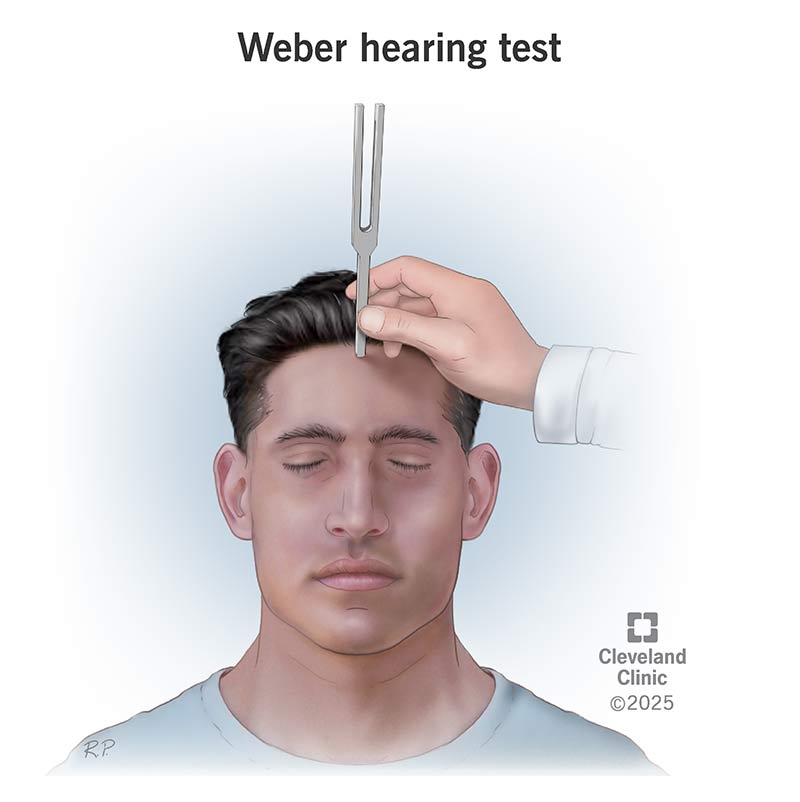A Weber test is a hearing test that uses a tuning fork to find out if you have conductive or sensorineural hearing loss. Conductive hearing loss is when something blocks your ear so you can’t hear. Sensorineural hearing loss means there’s damage to tiny hairs in your inner ear.
Advertisement
Cleveland Clinic is a non-profit academic medical center. Advertising on our site helps support our mission. We do not endorse non-Cleveland Clinic products or services. Policy

A Weber test is a type of hearing test. Healthcare providers use a tuning fork to diagnose conductive or sensorineural hearing loss. A tuning fork is a two-pronged instrument that makes a tone when you tap it.
Advertisement
Cleveland Clinic is a non-profit academic medical center. Advertising on our site helps support our mission. We do not endorse non-Cleveland Clinic products or services. Policy
Conductive hearing loss means sound doesn’t move through your ear to your inner ear. This can happen if you have lots of earwax, chronic ear infections or a ruptured eardrum.
Sensorineural hearing loss happens when something damages hair cells in your inner ear. You may have this hearing loss if there’s damage to your vestibulocochlear nerve.
You may have this test as part of a routine hearing screening or if a healthcare provider suspects you have hearing loss in one ear.
The test uses sound and vibration from a tuning fork, usually 512 Hz, to check how sound travels to your inner ear.
Hearing is a complicated process. It starts when sound waves become vibrations that move from your eardrum to tiny bones in your middle ear. From there, the vibrations go to tiny hair cells deep in your inner ear. The hair cells vibrate, sending messages to your auditory nerve and then onto your brain.
A primary care provider or otolaryngologist may do this test. It involves the following steps:
Advertisement
Your healthcare provider may say the test is positive. That means you have conductive or sensorineural hearing loss.
In conductive hearing loss, the tuning fork sound is louder in the ear with hearing loss (or with some hearing loss). In sensorineural hearing loss, the sound is quieter in the ear with suspected hearing loss. If hearing loss is the same in both ears, the tuning fork sound may be loudest in the middle of your forehead.
Your healthcare provider will explain your test results. They may use these results along with other tests to make treatment recommendations.
Your healthcare provider may do a Rinne test with a tuning fork. Your provider places the vibrating tuning fork on your head and then next to your ear. This test shows if there’s a difference in how you hear. They may refer you to an audiologist for more hearing tests.
Healthcare providers have used the Weber test for almost 200 years. Back then, the test was the only way to diagnose hearing loss. Now, some providers may do this test to find out why you have hearing loss.
A Weber test isn’t a formal hearing loss test. But it’s a simple way for your provider to learn what’s causing hearing issues. Knowing the cause may be your first step toward better hearing.
Advertisement
Hearing is an important part of your everyday life. Hearing loss can impact your life in so many ways. Cleveland Clinic experts can help you hear clearly again.

Last reviewed on 10/31/2025.
Learn more about the Health Library and our editorial process.